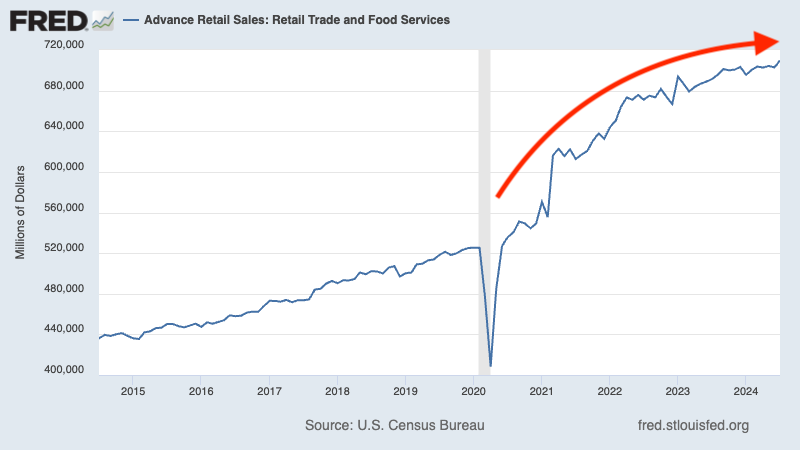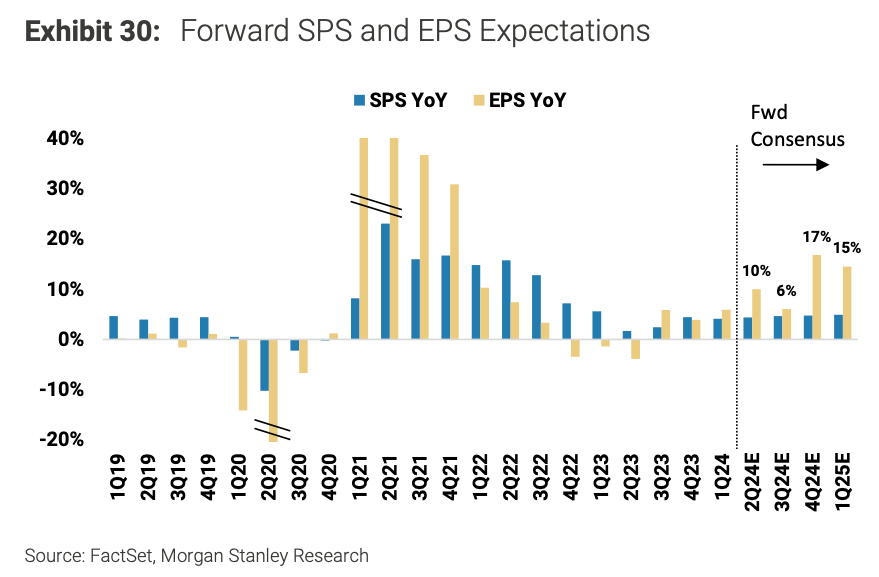Every once in a while, we’ll get a single anecdote that succinctly reflects a much bigger story in the economy.
Last week, we got such a perspective from Walmart CFO John David Rainey after the release of the company’s second quarter financial results. Via WSJ (emphasis added):
We continue to believe that customers are discerning, they are choiceful, they are focusing on essentials versus discretionary items, but we have not seen any incremental fraying of consumer health. … I wouldn’t say strength, but lack of weakness.
In other words, the American consumer isn’t spending as recklessly as they used to. But they aren’t falling apart.
This is in line with an economy that has become less coiled, highlighted by a cooling labor market that has become more balanced. And despite household excess savings falling and debt delinquencies rising as they normalize to prepandemic levels, consumer finances generally remain very healthy.
The consumers’ ability and willingness to spend is a big deal as personal consumption accounts for 68% of GDP. If consumers are spending, odds are the economy is growing.
Walmart, America’s largest retailer, reported Q2 net sales that grew a healthy 4.8% year-over-year, fueled by 4.2% growth in U.S. same-store sales. Management even boosted its full year guidance, projecting 3.75% to 4.75% growth in fiscal 2025 (up from a range of 3.0% to 4.0%).
And this is not just a Walmart story.
According to national data released by the Census Bureau on Thursday, retail sales in July grew 2.7% year-over-year to a record $709.7 billion.
Retail sales are at record levels, but the growth trend has been plateauing. FRED
While retail sales were up an impressive 1% from the prior month, I’d be reluctant to say they’re reaccelerating. Data has a tendency to zig zag month to month. When you zoom out a bit, it’s clear that spending growth has been plateauing, which is in line with other cooling economic metrics.
A Cooling Economy Isn’t A Bad Thing
Economic growth isn’t as scorching hot as it used to be. But that isn’t necessarily a bad thing — we seem to be experiencing a “goldilocks” set of conditions where economic activity is still growing while inflation remains cool.
These conditions aren’t necessarily bad for the stock market either.
Sure, cooling demand in the economy is a headwind for sales. But as we’ve been discussing, companies have shown they can convert modest sales growth into more robust earnings growth thanks to operating leverage. This is critical, because as we always say, earnings are the most important long-term driver of stock prices. It’s the “bottom line.” Read more here and here.
Analysts expect modest sales per share (SPS) growth to lead to strong earnings per share growth. (Source: Morgan Stanley via TKer)
It’s a good reminder of how the stock market is not the economy. Because, it’s possible for the stock market to outperform the economy.
A version of this post was originally published on Tker.co.
© 2025 Benzinga.com. Benzinga does not provide investment advice. All rights reserved.
Trade confidently with insights and alerts from analyst ratings, free reports and breaking news that affects the stocks you care about.

